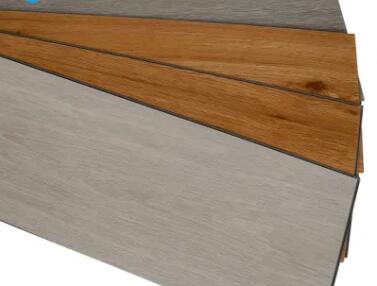The Durability Dance: Unveiling the Lifespan of Plastic Flooring and Repair Possibilities
2023-12-13
Introduction:
As homeowners and businesses explore diverse flooring options, plastic flooring, including vinyl, PVC, and laminate, has become a go-to choice for its versatility and durability. Understanding the lifespan of plastic flooring and the potential for repairs is crucial when making long-term decisions for your living or working space. In this blog, we'll delve into the typical lifespan of plastic flooring and explore whether it can be repaired when faced with wear and tear.
Lifespan of Plastic Flooring:
1. Vinyl Flooring:
Vinyl flooring is known for its resilience and durability. When properly maintained, high-quality vinyl flooring can last anywhere from 10 to 20 years, depending on factors such as the thickness of the wear layer and the level of foot traffic.
2. PVC Flooring:
Polyvinyl chloride (PVC) flooring, including luxury vinyl tiles (LVT), is designed for longevity. With routine maintenance and proper care, PVC flooring can maintain its aesthetic appeal for 15 to 25 years or more.
3. Laminate Flooring:
Laminate flooring, which typically consists of a fiberboard core, has a lifespan ranging from 15 to 25 years. The durability of laminate is influenced by factors such as the quality of the core material and the wear layer.
Factors Influencing Lifespan:
1. Quality of Materials:
The quality of the materials used in manufacturing plays a significant role in determining the lifespan of plastic flooring. High-quality materials, such as thicker wear layers and robust core components, contribute to enhanced durability.
2. Maintenance Practices:
Regular cleaning, proper maintenance, and adherence to manufacturer guidelines can extend the lifespan of plastic flooring. Avoiding harsh chemicals and using appropriate cleaning methods contribute to preserving the floor's integrity.
3. Level of Foot Traffic:
The amount of foot traffic the flooring experiences is a crucial factor. Areas with high foot traffic, such as commercial spaces or main living areas, may see more wear and require maintenance sooner than low-traffic spaces.
Repairing Plastic Flooring:
1. Individual Plank or Tile Replacement:
One advantage of plastic flooring is its modular nature. In cases of localized damage, such as a scratch or dent, individual planks or tiles can often be replaced without affecting the entire floor. This is particularly true for vinyl and PVC flooring.
2. Patch Repairs for Laminate Flooring:
Laminate flooring, which typically comes in larger planks, may be repaired using patch methods. This involves replacing the damaged section with a matching piece, ensuring a seamless appearance.
3. Fillers and Sealants:
For minor scratches or small dents, fillers and sealants specifically designed for the type of plastic flooring can be used to conceal imperfections. These products are available in a variety of colors to match the flooring.
4. Professional Repairs:
In cases of extensive damage or if you're unsure about DIY repairs, it's advisable to consult with flooring professionals. They can assess the damage and provide guidance on the most effective repair methods.
Conclusion:
The lifespan of plastic flooring is influenced by various factors, including material quality, maintenance practices, and the level of foot traffic. With proper care, plastic flooring can provide a durable and aesthetically pleasing surface for many years. Additionally, the modular nature of these flooring types allows for localized repairs, contributing to their longevity. Whether you opt for vinyl, PVC, or laminate, understanding the lifespan and potential repair options empowers you to make informed decisions that align with your long-term flooring goals.



